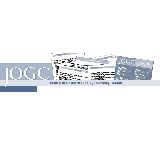
Objective:
To evaluate the influence of maternal and paternal country of origin on stillbirth risk.
Methods:
We conducted a retrospective case–control study of all deliveries in Ontario between 2002 and 2011. We included 1373 stillbirths and 1 166 097 live births that had a documented country of origin for both parents. All newborns were singleton, born at between 20 and 42 weeks’ gestation, and weighed 250 g to 7000 g. We computed adjusted odds ratios (aOR) and 95% confidence intervals for the risk of stillbirth associated with parental country of origin. Models were adjusted for infant sex, maternal age, parity, marital status, and residential income quintile.
Results:
Compared with parent pairs in which both parents were Canadian-born, the aOR of stillbirth was higher whether immigrant parents came from the same country (aOR 1.32, 95% CI 1.16 to 1.51) or from different countries (aOR 1.34, 95% CI 1.08 to 1.65). The risk of stillbirth was highest for immigrant parents coming from the same country if that country had a high domestic stillbirth rate (aOR 1.60, 95% CI 1.30 to 1.97).
Conclusion:
Maternal and paternal country of origin influences stillbirth risk. Foreign-born couples, especially those originating from a country with a high stillbirth rate, are at greater risk. Attention should focus on identifying genetic and environmental risk factors for stillbirth among specific immigrant groups, including developing prevention strategies for high-risk couples.